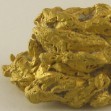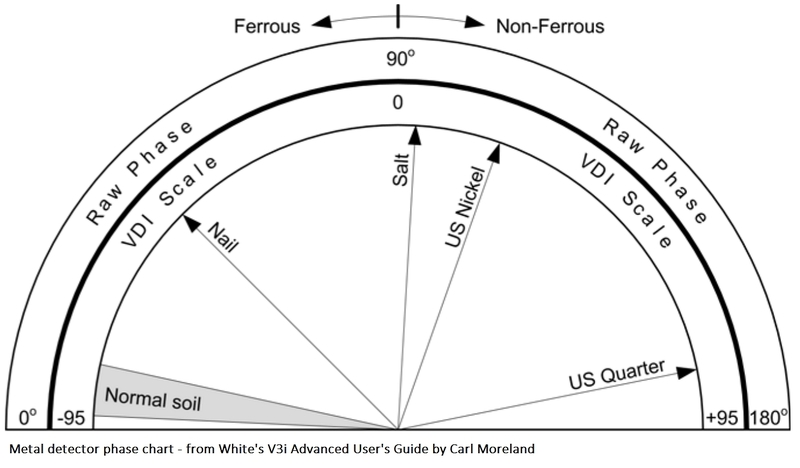Leaderboard
Popular Content
Showing content with the highest reputation on 01/20/2022 in all areas
-
We are in semi drought conditions here in Central Texas. I went back to the park that's been producing quite well. Today I focused on where the water would normally be under normal conditions. I ran my tone break right at 21 because the trash was almost unbearable. I may have left some nickels but I was able to pick up a few keepers. When I have more time and patience I'll go back and investigate the mid to lower tones.12 points
-
This post was a response buried deep in a thread on the Equinox Forum, but got long enough on a subject I think about a lot, that it deserved its own thread. Here you go. I find the whole George Payne way of conceptualizing things to be rather out of date myself. That was back in the day when only one thing mattered - detecting coins. Silver coins in particular. So he was looking at frequency, and most importantly, coin size targets. If you do that, fix target size, you get the false idea that frequency corresponds to type of metal. Nickels respond here. Gold coins here. Copper coins here. And the biggie, silver coins here. That's how the first coin discriminators were conceived. But it has also lead to this mythology that frequency corresponds to metals. Gold is high frequency, silver low frequency. No, it's not. There is no correlation between frequency and type of metal if you do not fix the size at some artificial limit. In fact, gold ranges from ground readings all the way to so-called silver readings. If you fix the metal type, frequency corresponds to size. Low frequency big gold, high frequency small gold. There was also ground to deal with, and ground reacts less well at low frequencies, so a double bonus for silver hunters. You might think it is low frequency working better with silver. But you might also think of it in terms of the detector simply being better able to see the silver, for not seeing the ground. It's all about conceptualization, and you can conceive of the same thing from different angles. I consider the old George Payne way of looking at things as obsolete from my perspective. It really was only something that worked well in the United States, and only because of an accident in our coin size and metal types. It allowed a scale to be created that worked well with silver coins and nickels, while knocking out a lot of trash items. In most other countries, our target id scale is worthless because their coins do not fit our classic scale. I detect for gold. I think in different terms entirely. For me frequency does two opposing things. Higher frequency is better for small targets. Small gold, small silver, small copper..... small stuff. But high frequencies also enhance ground, and especially, hot rock responses. The two effects offset each other, and can reverse things if ground is severe enough. This also totally applies not to nugget hunters like myself, but almost anybody hunting coins and relics under any situation but the classic U.S. silver coin regime. Let me explain. So I want to find gold nuggets. I must first think about the nugget size that I am looking for. I can look for the more common small gold, or the rarer large gold. If I want tiny gold, I usually want a high frequency detector, the higher the better. Now, here is the kicker. High frequency does just fine on large gold also. In fact, high frequency just detects well on everything - in the air. So air test a Gold Bug 2 on things, and it is amazing. Unfortunately, the high frequency also "lights up" the ground to an amazing degree, and it is hard to get good depth on anything at very high frequencies. The signal attenuates rapidly in the ground, and the worse the ground is (more magnetite in general), the faster the depth drops off. Hot rocks that never responded at low frequencies are now everywhere at high frequencies. Lower frequency starts looking better not just because it does better on large targets, but just as much because it is less reactive to the ground. The 71 kHz Gold Bug 2 is an amazing detector. I can find pinhead gold with it. The big caveat is that in most nugget ground it has low penetration, and is very poor on large nuggets at depth. Not because it air tests poorly on large gold, but because the ground sucks up the signal. 71 kHz is great for small gold, and even large gold in the mildest soils, but in bad ground it has poor depth, and makes hot rocks a real issue. If I am looking for large gold at depth, I might very well use a lower frequency VLF in the old days, just as much because it is responding less to the ground as anything else, allowing large gold to be more easily found at depth. For my purposes, a PI detector for a long time was just a high power, super low frequency detector. Huge punch on large gold, with minimal ground response. So PI took over early on from the VLF low frequency, large nugget detectors of the time. I mentioned relic detecting and coins in other countries. If you detect Europe, our U.S. coin scale is garbage. It's not "low frequency = silver." Over there silver can be all over the target id map. Huge silver coins. Or tiny silver coins. Or small coins hammered thin as foil. Or those hammered coins cut to make change. Silver under those circumstances occurs anywhere on your target id scale from ground to the highest reading, 0 to 100. It all just depends on the size, with a little ground effect tossed in to drag things down. So in Europe, if you want to chase tiny silver cut coins, or very small gold coins, higher frequencies work well, whether it is gold or silver. The metal does not matter. It is size that matters. Relic hunters see the very same thing. High frequencies find the small bits, regardless of what they are - worst fact being tiny ferrous. I long ago tossed the frequency and metal thing in my garbage can. Here is my reality. High frequency will help me with smaller targets, but also make dealing with the ground harder. Low frequencies simply have less ground and hot rock response, and also less tiny trash stuff response, making them better if I want want to focus on larger targets, like coins or rings. In my lifetime experience there is a crossover point for gold, and going too high enhances tiny gold nuggets, but also loses depth due to ground issues. A sweet spot develops around 50 kHz, which White's chose ages ago in the Goldmaster II, as being great for small gold nuggets, while still retaining punch in bad ground on larger gold nuggets. Minelab rediscovered this with the Gold Monster, and went with 45 kHz for this very reason. They found pushing high did better on tiny stuff, but the cost in larger heavier gold was not worth it to serious nugget hunters in bad Australian type ground. If I was hunting tailing piles for ounce type gold nuggets, it is hard to beat a 15 kHz type detector, just like that ancient 15 kHz Garrett Groundhog circuit, that was at the time a high frequency, but in retrospect was a great large nugget lower frequency. The White's MXT at 13 kHz is superb on large nuggets in trashy locations. If you are in Europe, that 15 kHz sweet spot applied for a long time, but more recently people have discovered the benefits of higher frequencies on these tiny cut silver and small gold coin finds. Pulse Induction did serve as super low frequency for a long time. You gave up small gold to get big gold as deep as possible. The lack of ground response allows use of extra large coils. It is interesting to me that as newer PI detectors are pushed to get more sensitive to small gold, that ground and hot rocks have also become more problematic. The newest PI nugget hunters suffer from hot rock responses you never saw on the old PI models. PI is getting more like VLF over time. So Billy, does Minelab put all this in Multi-IQ processing? Of course. But not in the way you think. They think more like me. It's every bit as much about ground, and saltwater, and even EMI, and what you do not want to detect, more so than metal types. A primary choice is saltwater - that forces a low frequency mix simply to avoid the salt response. Which, as I seem to have explained to beach guys a million times, also knocks out small gold responses. For large coin detecting a lower frequency mix gives clean responses on larger targets like U.S. coins and rings, while getting less ground response, fewer hot rocks, and far less tiny trash signaling. It is not targeting silver coins per se, just larger stuff. For tiny items, gold nuggets, small hammered silver coins, a higher frequency mix works well, but you will deal with more ground and hot rock response, more tiny trash. Forget metal type. Think size and ground, including saltwater, and hot rocks. As you increase frequency, everything responds better, and small items that respond poorly or not at all at low frequencies will do better. Ground, saltwater, and hot rock signals also increase with frequency. The first cut off is at saltwater. To work there, you must have a lower frequency mix to eliminate salt signal, and you lose all tiny stuff as well, tiny aluminum, tiny gold. This can also do very well on large targets in any ground. The teens are really nice for general detecting, right on the edge of the salt range. 12 kHz - 15 kHz hits really well on most desired detecting targets, while not being overly sensitive to ground and the tiniest trash targets. 40 - 50 kHz is a sweet spot for gold nuggets and all really small targets, like the smallest cut silver coin, targeting the sub-gram range kind of stuff with some alleviation of ground and hot rock issues that develop at extreme frequencies. You get up above 50 kHz and you really are just surface skimming for the tiniest bits. Depth just drops off rapidly due to the ground, and so this is specialty range for the smallest targets. Multifrequency changes none of this, and making a machine that found everything best at all frequencies just gives you a detector that reacts to everything and finds nothing. It is about picking a few divergent frequencies that when differentials are applied, can add extra target information. This is as much about ground as anything else. The classic is the salt beach, where you want to notch out both salt response and ground response. Single frequency can't get you there except in crudest form, eliminating both, while losing a lot of gold. Using two frequencies lets you notch back in some gold jewelry missed by eliminating both ground and salt with a single frequency. Looking at two frequencies that are close together is a waste of time and processing power. The target and ground response is the same. But pick two very divergent frequencies, and you will see differences in target response and ground response. This whole idea of having a detector look at and analyze 100 frequencies simply makes no sense, and reveals the nonsense we have been fed for ages about more frequencies being better. Again, there are only a handful of gross frequency ranges that really matter. Under 10 kHz = find U.S. large coins well, minimal small trash and ground responses, few hot rocks. Call this Park Mode, with a special subset that tunes out salt, called Beach Mode 15 kHz plus or minus, great on a large range of small to large targets, while still not being overly sensitive to ground and very tiny trash. Call this Field Mode. This is an excellent all around compromise mode between low and high. 40 - 50 kHz is great for sub-gram targets, but will make dealing with ground and tiny trash problematic. Let's call this a Gold Mode. 70 - 80 kHz is basically surface skimming for pinheads, max hot rock and tiny trash response. Pinhead Mode? A niche area for sure. Four basic options, and really three, since the highest is very niche. It is also comparing results in these three or four options that give you the most bang for the buck in multi. They diverge enough to provide the basis for good differential algorithms. Again, multifrequency really just adds better ground and target id capability for cleaner, more accurate responses across the board. It's not some magic about finding all targets best at all frequencies by lumping them all together. Most frequency discussions simply miss the reality of what is going on, and what is being achieved by going multifrequency. I will say it one last time. Think of frequency, whether single frequency, or a mix of frequencies, in terms of the desired target size, offset by the added ground/salt response. Think of the target id scale as a size scale, low numbers are small targets, high numbers large targets. Think less about it being an indication of type of metal. Aluminum responds anywhere on the scale. So does gold, lead, silver, copper. Small foil a low single digit, and aluminum can like a silver quarter. Pick your frequency mix and your target id numbers to match the size of the targets you are seeking, and life will get easier. And quit thinking of multifrequency in terms of finding more targets better the more frequencies you use. Nonsense, just marketing nonsense. The White’s chart below kind of says it all. I’d certainly be picking a high frequency VLF for the tiny gold. But $20 gold coins? Any good detector is going to work, and I’d be far more likely to go 15 kHz or lower. Newer Thread in a Similar Vein9 points
-
The use of the term "-3dB frequency" is misleading if you know what that term usually means in electronics. It's not a -3db frequency at all, rather it's just the frequency where you get a maximum R-response. A picture is worth 900 words so... Suppose we're talking about a copper coin of some kind. At 1kHz it has a small response magnitude at a phase just past 90°. Increase the frequency to 2kHz and the magnitude and phase both increase. Again for 5kHz, 10kHz, and 20kHz. The magnitude and phase always increase with increasing frequency. Seems like the target will be easier to detect at 20kHz, that's a big response. Except... we don't look at the target magnitude. Instead, we only look at the R-response. The reason is that ground is phase-adjusted to lie along the 0° axis which means the X-response may have a lot of ground signal in it while the R-response has none. This means that only the R-channel is clean and useful for initial target indication. (When you listen to a threshold-based detector you are listening to the R-channel. If you hear ground noise then it's because the ground phase isn't properly adjusted and some of it is getting into the R-channel.) In this example the peak R-response is at 5kHz. This also corresponds to one-half of an eventual maximum X-response the target could possibly generate. Payne calls it the half-power/-3dB frequency which I don't care for because it doesn't correspond with the traditional use of those terms. Some people call it the resonant frequency which is even worse, there is no resonance at all. It's just a result of only using one-half of quadrature demodulation. In any case, it is true that (everything else being equal) a 5kHz detector will detect this particular coin better than at other frequencies.7 points
-
I will never forget this guy that visited my Moore Creek gold mine in Alaska, where the goal was finding multi ounce gold nuggets in bad ground. He had a 71 kHz Fisher Gold Bug 2, and I was sporting a 13 kHz Fisher F75. He swore his Gold Bug 2 could out detect my F75. I told him yeah, on small stuff, but not the large. He said "nope, tested them, the Gold Bug 2 wins." I asked "air test." He nodded. I knew I had him. So I got a larger nugget, forget exactly what, but 1/4 - 1/2 ounce type thing. We air tested the machines, and sure enough, the Gold Bug 2 blew the F75 away. He was smiling. Then we buried the nugget at about where I knew the F75 would reach. Decent signal. Gold Bug 2. Nothing. Not a weak signal, no signal. The guy was stunned. Absolutely stunned. This simple story is why I tend to scoff at air tests. They serve some purpose in showing theoretical depth max info, so if he and I were in Florida on white sand, he would indeed have beat me. Air tests are a nice way to learn target id numbers. But air testing detectors is like testing race cars with wheels jacked off the ground. Dyno tests only tell you so much, what counts is when the rubber meets the road, and with detectors, when coils meet the ground. I habitually hunt bad ground, and not only find air tests of little value, but even results from most detector test gardens, as they are in mild ground. 12" dimes? Are you kidding me? Not even close in my ground. I see often see results half what others see in mild ground. I wonder how many newbies have that happen, watch the internet, and think their detector is defective?6 points
-
Thank you!! To answer your question, we are open to collaborating with any third party as long as it makes sense for both parties. Detech approached us for making coils for the Simplex and we welcomed it and worked together on their coils. Now, I know NEL announced coils for the Simplex+. However, they could not technically manufacture coils for the Simplex+ unless they bought certain parts from us. I personally sent them a message via the distributor and told them we were open to collaboration. Last thing I heard was they were going to get back to me with a proposal but they never did. I asked one last time and never got a response and I do not know the reason why... and this was back in January 2021. PI - still in the works.... the project was pushed back a bit because of other projects taking the priority but it is back on full speed...will not even give you an estimate on the release date for the obvious reasons:-) THANK YOU!6 points
-
Every time we get new detectors for the beach, we get the same question. "Will it find thin gold chains better?" It comes up so often I finally dug up an old post I can just point to whenever it comes up. Here you go. Gold Chains and Other Small Gold In Saltwater Here is a similar question that comes up a lot: Why Won't My Detector Find That Gold Chain? There seems to be a thought process that thinks somehow multifrequency overrides basic laws of physics, that some magic new processing is going to fix the issue. No. Not as long as conductivity is the measure. Once you understand this, you stop asking the question. Hopefully the article helps out with that.5 points
-
I like this image because it is one of the only ones I have seen that illustrate the effect on size instead of type. Minelab tried to take credit here, but it really was White's that found the 40 - 50 kHz sweet spot for small gold. Again we have marketing at work. This frequency range is great for many small gold locations, while still doing well on large gold. But it is the gold on site that matters. If the location is old bucket line tailing piles, then there may be no small gold at all. Just larger oversize nuggets, say 1/4 ounce or larger, with main hope a multi ounce nugget. Then this chart is simply wrong, and that 18 kHz detector is now the winner. Conversely, what is there is nothing but 0.1 gram and smaller gold? Not that unusual actually in the goldfields. Now that 71 kHz machine reigns supreme. You have to know enough to read between the lines when it come to marketing, and in this case it is really telling you lower frequency for larger stuff, higher frequency for smaller stuff. Again, does not matter if it is silver, copper, or gold. It's all about size.5 points
-
I find the whole George Payne way of conceptualizing things to be rather out of date myself. That was back in the day when only one thing mattered - detecting coins. Silver coins in particular. So he was looking at frequency, and most importantly, coin size targets. If you do that, fix target size, you get the false idea that frequency corresponds to type of metal. Nickels respond here. Gold coins here. Copper coins here. And the biggie, silver coins here. That's how the first coin discriminators were conceived. But it has also lead to this mythology that frequency corresponds to metals. Gold is high frequency, silver low frequency. No, it's not. There is no correlation between frequency and type of metal if you do not fix the size at some artificial limit. In fact, gold ranges from ground readings all the way to so-called silver readings. If you fix the metal type, frequency corresponds to size. Low frequency big gold, high frequency small gold. There was also ground to deal with, and ground reacts less well at low frequencies, so a double bonus for silver hunters. You might think it is low frequency working better with silver. But you might also think of it in terms of the detector simply being better able to see the silver, for not seeing the ground. It's all about conceptualization, and you can conceive of the same thing from different angles. I consider the old George Payne way of looking at things as obsolete from my perspective. It really was only something that worked well in the United States, and only because of an accident in our coin size and metal types. It allowed a scale to be created that worked well with silver coins and nickels, while knocking out a lot of trash items. In most other countries, our target id scale is worthless because their coins do not fit our classic scale. I detect gold. I think in different terms entirely. For me frequency does two opposing things. Higher frequency is better for small targets. Small gold, small silver, small copper..... small stuff. But high frequencies also enhance ground, and especially, hot rock responses. The two effects offset each other, and can reverse things if ground is severe enough. This also totally applies not to nugget hunters like myself, but almost anybody hunting coins and relics under any situation but the classic U.S. silver coin regime. Let me explain. So I want to find gold nuggets. I must first think about the nugget size that I am looking for. I can look for the more common small gold, or the rarer large gold. If I want tiny gold, I usually want a high frequency detector, the higher the better. Now, here is the kicker. High frequency does just fine on large gold also. In fact, high frequency just detects well on everything - in the air. So air test a Gold Bug 2 on things, and it is amazing. Unfortunately, the high frequency also "lights up" the ground to an amazing degree, and it is hard to get good depth on anything at very high frequencies. The signal attenuates rapidly in the ground, and the worse the ground is (more magnetite in general), the faster the depth drops off. Hot rocks that never responded at low frequencies are now everywhere at high frequencies. Lower frequency starts looking better not just because it does better on large targets, but just as much because it is less reactive to the ground. The 71 kHz Gold Bug 2 is an amazing detector. I can find pinhead gold with it. The big caveat is that in most nugget ground it has low penetration, and is very poor on large nuggets at depth. Not because it air tests poorly on large gold (it tests great), but because the ground sucks up the signal. 71 kHz is great for small gold, and even large gold in the mildest soils, but in bad ground it has poor depth, and makes hot rocks a real issue. If I am looking for large gold at depth, I might very well use a lower frequency VLF in the old days, just as much because it is responding less to the ground as anything else, allowing large gold to be more easily found at depth. For my purposes, a PI detector for a long time was just a high power, super low frequency detector. Huge punch on large gold, with minimal ground response. So PI took over early on from the VLF low frequency, large nugget detectors of the time. I mentioned relic detecting and coins in other countries. If you detect Europe, our U.S. coin scale is garbage. It's not "low frequency = silver." Over there silver can be all over the target id map. Huge silver coins. Or tiny silver coins. Or small coins hammered thin as foil. Or those hammered coins cut to make change. Silver under those circumstances occurs anywhere on your target id scale from ground to the highest reading, 0 to 100. It all just depends on the size, with a little ground effect tossed in to drag things down. So in Europe, if you want to chase tiny silver cut coins, or very small gold coins, higher frequencies work well, whether it is gold or silver. The metal does not matter. It is size that matters. Relic hunters see the very same thing. High frequencies find the small bits, regardless of what they are - worst fact being tiny ferrous. I long ago tossed the frequency and metal thing in my garbage can. Here is reality. High frequency will help you with smaller targets, but also make dealing with the ground harder. Low frequencies simply have less ground and hot rock response, and also less tiny trash stuff response, making them better if you want want to focus on larger targets, like coins or rings. In my lifetime experience there is a crossover point for gold, and going too high enhances tiny gold nuggets, but also loses depth due to ground issues. A sweet spot develops around 50 kHz, which White's chose ages ago in the Goldmaster II, as being great for small gold nuggets, while still retaining punch in bad ground on larger gold nuggets. Minelab rediscovered this with the Gold Monster, and went with 45 kHz for this very reason. They found pushing high did better on tiny stuff, but the cost in larger heavier gold was not worth it to serious nugget hunters in bad Australian type ground. If I was hunting tailing piles for ounce type gold nuggets, it is hard to beat a 15 kHz type detector, just like that ancient 15 kHz Garrett Groundhog circuit, that was at the time a high frequency, but in retrospect was a great large nugget lower frequency. The White's MXT at 13 kHz is superb on large nuggets in trashy locations. If you are in Europe, that 15 kHz sweet spot applied for a long time, but more recently people have discovered the benefits of higher frequencies on these tiny cut silver and small gold coin finds. Pulse Induction did serve as super low frequency for a long time. You gave up small gold to get big gold as deep as possible. The lack of ground response allows use of extra large coils. It is interesting to me that as newer PI detectors are pushed to get more sensitive to small gold, that ground and hot rocks have also become more problematic. The newest PI nugget hunters suffer from hot rock responses you never saw on the old PI models. PI is getting more like VLF over time. So Billy, does Minelab put all this in Multi-IQ processing? Of course. But not in the way you think. They think more like me. It's every bit as much about ground, and saltwater, and even EMI, and what you do not want to detect, more so than metal types. A primary choice is saltwater - that forces a low frequency mix simply to avoid the salt response. Which, as I seem to have explained to beach guys a million times, also knocks out small gold responses. For large coin detecting a lower frequency mix gives clean responses on larger targets like U.S. coins and rings, while getting less ground response, fewer hot rocks, and far less tiny trash signaling. It is not targeting silver coins per se, just larger stuff. For tiny items, gold nuggets, small hammered silver coins, a higher frequency mix works well, but you will deal with more ground and hot rock response, more tiny trash. Forget metal type. Think size and ground, including saltwater, and hot rocks. As you increase frequency, everything responds better, and small items that respond poorly or not at all at low frequencies will do better. Ground, saltwater, and hot rock signals also increase with frequency. The first cut off is at saltwater. To work there, you must have a lower frequency mix to eliminate salt signal, and you lose all tiny stuff as well, tiny aluminum, tiny gold. This can also do very well on large targets in any ground. The teens are really nice for general detecting, right on the edge of the salt range. 12 kHz - 15 kHz hits really well on most desired detecting targets, while not being overly sensitive to ground and the tiniest trash targets. 40 - 50 kHz is a sweet spot for gold nuggets and all really small targets, like the smallest cut silver coin, targeting the sub-gram range kind of stuff with some alleviation of ground and hot rock issues that develop at extreme frequencies. You get up above 50 kHz and you really are just surface skimming for the tiniest bits. Depth just drops off rapidly due to the ground, and so this is specialty range for the smallest targets. Multifrequency changes none of this, and making a machine that found everything best at all frequencies just gives you a detector that reacts to everything and finds nothing. It is about picking a few divergent frequencies that when differentials are applied, can add extra target information. This is as much about ground as anything else. The classic is the salt beach, where you want to notch out both salt response and ground response. Single frequency can't get you there except in crudest form, eliminating both, while losing a lot of gold. Using two frequencies lets you notch back in some gold jewelry missed by eliminating both ground and salt with a single frequency. Looking at two frequencies that are close together is a waste of time and processing power. The target and ground response is the same. But pick two very divergent frequencies, and you will see differences in size response and ground response. This whole idea of having a detector look at and analyze 100 frequencies simply makes no sense, and reveals the nonsense we have been fed for ages about more frequencies being better. Again, there are only a handful of gross frequency ranges that really matter. Under 10 kHz = find U.S. large coins well, minimal small trash and ground responses, few hot rocks. call this Park Mode, with a special subset that tunes out salt, called Beach Mode 15 kHz plus or minus great on a large range of small to large targets, while still not being overly sensitive to ground and very tiny trash. Call this Field Mode, but really its just best all around mode. 40 - 50 kHz is great for sub-gram targets, but will make dealing with ground and tiny trash problematic. Let's call this a Gold Mode. 70 - 80 kHz is basically surface skimming for pinheads, max hot rock and tiny trash response. Pinhead Mode? Again, multifrequency really just adds better ground and target id capability for cleaner, more accurate responses across the board. It's not some magic about finding all targets best at all frequencies by lumping them all together. Most frequency discussions simply miss the reality of what is going on, and what is being achieved by going multifrequency. I will say it one last time. Think of frequency, whether single frequency, or a mix of frequencies, in terms of the desired target size, offset by the added ground/salt response. Think of the target id scale as a size scale, low numbers are small targets, high numbers large targets. Forget aluminum or silver or gold. Aluminum responds anywhere on the scale. So does gold. Small foil a low single digit, and aluminum can like a silver quarter. Pick your frequency mix and your target id numbers to match the size of the targets you are seeking, and life will get easier. And quit thinking of multifrequency in terms of finding more targets better the more frequencies you use. Nonsense, just marketing nonsense.5 points
-
OK, new forum is done, threads moved. https://www.detectorprospector.com/forums/forum/61-xp-deus-ii-forum/ I normally keep detector comparison stuff in a separate forum to stop detector wars. But the Deus II versus whatever videos have been pretty favorable, and not much dissension, so I have moved them all there also. Just seemed like one stop shopping is best. As long as people keep acting like adults it will work. Thanks in advance for that.4 points
-
4 points
-
Thank you so much Dilek for your answers, now I know to hound Nel about the Simplex coils and hopefully they get their act together, and I'm so super happy you're open to allowing aftermarket coils on your detectors I thank you very much for this, I and so many others will appreciate this stance you've taken! Fantastic! I firmly believe although the detector manufacturer may lose some sales of their own coils by allowing aftermarket coils they boost the sales of their detectors by doing so, one thing that makes a detector great is having a good variety of coils for it, and having options in coil brand and type is something that's becoming a rarity, the company willing to allow this has a distinct advantage over those that don't. I'm so pleased to hear you're also working on the PI. I really look forward to that coming to market. What the world needs is a good quality reasonably priced PI prospecting machine and in my opinion Nokta are the best for that task. Thanks for getting back to me so promptly. You've made my day.4 points
-
Billy, Here's what you do. Search this forum for any post by "Geotech". He actually posted in one of your threads. That's Carl Moreland. He is a design engineer who has worked for Whites and now works for First Texas. Suck up any nuggets you can from his posts.. Then hop on over to his site. If you ever want to build your own detector or just want to nerd out on the various technologies and scientific principles used for metal detecting (Faraday's law, induction balance, pulse induction) you can find the subject matter discussed in excruciating detail on the references pages and forum there. Finally, grab a paper or electronic copy of Carl's book, "Inside the Metal Detector", co-authored with George Overton. Among a host of other topics about metal detector principles and technology, they describe how operating frequency affects target detectability in depth. What you will find is there is no singular answer to the question you are seeking because the variables in play are simply too complex. I get the impression you are looking for the optimal frequency to detect a silver Roosevelt dime vs. the optimal frequency to detect an 1849 $1 Gold piece vs. the optimal frequency to detect a King George III Copper. The answer is a less than satisfying, "It depends". And the best you can really do is speak in generalities. For example, if you want to detect high conductors (e.g. silver coins) at depth go low in frequency (say 4khz), you want gold jewelry then 20 khz is a good neighborhood. Then you need to consider ground effects that tend to attenuate higher frequencies and EMI which tends to be more prevalent at lower frequencies and you find that metal detecting is not about finding the -3dB half-power reactive component sweet spot but is really about balancing and trading off all these competing effects to give you the best chance to detect your particular target of interest. HTH Ahh- Carl beat me to it. Thank you! I was wondering when you were going to chime in.4 points
-
Aye, initially I thought being near the exalted grand Poohbah would be a big plus, but with that fear I`m starting to believe being downunder with a sea of masks between is a massive plus......4 points
-
So Denver minted rarities make it out there, too. 👍 Eastern USA, being older, has some good stuff as well, but because the branch mints typically made fewer coins per year and most of those were released in the West, I think you have an advantage for those who care about date+mm. Older low denomination type coins are more prevalent in the East. First time I've heard that, but it's a great way of putting it. People ask me why I spend hours collecting less than $1/hr (and that doesn't include expenses). I'm going to use your answer from now on although I still don't expect them to understand. Just as well; the competition is tough enough already. I'd rather find a coin worth $100 than be handed a $1000 lottery ticket. Again, most people wouldn't understand, but I bet you (and quite a few others here) do.4 points
-
klunker, I've never seen you but now I think I'm afraid to. I do have the mask your looking for, but I need it more than you do. Good luck on you hunt for good.4 points
-
4 points
-
A desert gold-hunting misadventure I've worked that dry desert dirt chasing gold in Arizona, and it taught me I much prefer using water! Yet, that desert gold sure is truly, beautiful stuff. And, that’s why I was out there looking for some. While I was working a dry wash on the side of a hill, I found myself wrapped up in a frightening misadventure. To begin, there were old dry-washer piles everywhere. So, being a likely place for gold, I picked a spot with bedrock outcroppings that looked more promising than the rest (I have to tell you at this point in my tale that I can’t stand spiders, of any size or kind.), and I started to dig. As I prospected along the wash, I started to see these round holes located in the bank. Well, I'd seen some of them while I was detecting in flatter areas (and of course, those holes went straight down), and I'd spotted a tarantula crouching in one of them, the front appendages wiggling, those blood-thirsty eyes boring directly into the terror center of my brain! You get the picture—that was enough for me. I quickly changed locations—with about the same speed as a jacked-up sprinter on steroids does. Only, sprinters are far slower it appears, because I'm certain I broke several Olympic records as I raced through that unforgiving region of plant life where everything pokes, stings, or bites! (I'm thinking of a full Kevlar body suit the next time I have to run from a tarantula. It might save me from the nasty bite as well as stop me from picking spines from my hide for two days afterward.) Despite my escape from near death, I went off digging in a new spot, a little wash among the grease-wood and creosote. I started working my way uphill, and when I saw those same, round holes I've mentioned earlier, I started to have freaky flashbacks. However, I overrode my brain's early warning system. (I'm quite famous for disabling my body’s hard-wired survival systems and that has allowed me to have some truly wild experiences that spice my otherwise bland life.) Motivated by the fact that I'd traveled well over a thousand miles to get myself some desert gold, I wasn't going to let some hairy, fanged octo-ped drive me from my diggings, not on such a fine desert day. So, I stared at those holes for a moment longer (there were three of them, about head height--ranged across the hill close to a foot apart, with the middle of the three just about dead center with my body), and I decided that I would go about loosening the dirt that covered the bedrock wall in that spot. With my pulse back to a normal level, and my formerly panicked brain calmed to a benign state, I hefted the reassuring weight of my pick, and drove the pick into the ground. Like a blast from a rocket-propelled-grenade, something came flying out of that center hole!! It flew at me so fast that I had no time to react. I was the perfect, paralyzed victim. On a side note, if you've ever been in a car crash (as I have), you may have experienced this phenomenon: time and action slow to a crawl. Every minute detail is recorded by the brain which is somehow temporarily rewired to Star Trek warp speed factors. This allows your melon to record every little detail at hyper speed, thus generating a slow-motion recording mode. This lets the brain capture the entire event perfectly so that you can micro-analyze it in perpetuity. But, I need to backtrack to the moment when the unknown terror shot forth from the hole. It was heading straight for my chest, and it had a leathery head with several colors. It was wagging from side to side. The tail was long and it was swaying back and forth, acting as a rudder, driving the horror relentlessly toward my paralyzed body. I watched immobilized as it dropped below eye level, then caught the bizarre object again, just to the right of me, as it plowed into the desert dirt. Sensing this was no spider, my brain switched out of panic mode, and it returned to recording at normal speed. This flying menace was only some kind of stinking, pea-brained lizard! Although this rotten reptile was launched from the underworld to give me a heart attack, quite obviously, the desert plot to frighten me had failed miserably. For, I have no fear of lizards or snakes you see (Strange huh? I mean, the snakes may kill you, but the hideous tarantulas will only tease you a friendly bite that feels as if liquid fire is lancing through every cell and nerve ending of your entire body. So, no wonder snakes don't worry me. . . .), and because I don't fear reptiles, I was able to laugh. The fact that laughter sounded much like a pack of deranged hyenas is irrelevant. It was a healing event for me, a wondrous catharsis. Who cares if the aforementioned laughter terrorized the nearby city of Phoenix and jammed every available 911 circuit with panicked callers. On a reflective note, in a bold act demonstrating my supreme daring and courage, I abandoned that hill-side and headed off to a flat, wandering trail I'd spotted earlier in the day, one that leisurely led across a level mesa, about three miles distant. . . . All the best, Lanny3 points
-
I know of a couple of other 1916D Mercury dimes that've been dug around here, 1909-S VDB wheat cents show up. People who embrace the history, and appreciate the historical context their finds represent, they understand it. I never sell my finds, so it's not about the $ but it sure feels great to dig a high value target 👍3 points
-
Your choice of coin to test was totally fine. Not many people here in North America that metal detect would know what a .50 Euro coin is like. I just wanted to give people here a frame of reference.3 points
-
I completely agree VLF's are a great complement to a PI/GPZ but they really lack depth even on small bits about .1 of a gram of more compared to the GPZ. In my case is a bulk of the gold is missed using a VLF due to the depth of the gold as we don't seem to have much if any at all of that difficult to detect type of gold? I've only found one nugget in my entire time detecting that's difficult for a PI/GPZ to hit on and I swing VLF's a lot on gold ground and have found hundreds of nuggets with the VLFs. Even in my ground which I think is rather mild VLF's are severely hindered by their depth, because of this they miss a whole lot of nuggets too, I would say a VLF will miss 80% of the nuggets here and that's an educated guess as that's about how much my nugget take has improved since I stopped swinging VLF's all the time and starting swinging the GPZ 🙂 No one detector does it all, at least no detector I've owned, so I happily swing away my GPZ and complement it with my Nox 800 and Garrett 24k. A GPX 6000 maybe the closest thing to a combined GPZ plus VLF for my ground.3 points
-
My intent was misinterpreted, so I clarified it in the Classifieds rules. New members will have to have made at least ten posts over a minimum of a 30 day period on the forums before being allowed to post in the Classifieds. The change was from “members” to “new members”. Frankly, I thought that would be a given. I had to make the original ten post over 30 day rule because people would join, make ten posts in a day, and place an ad. The change made them work a month to do it, and did put a stop to it. The intent of the Classifieds is simple. Provide genuine active members with a free venue to advertise. That’s it. But the internet being what it is, I’ve had to add all the BS to head off scammers. Anyone that’s been a member for years is welcome to post ads, even if they have not posted anything else in ages. I realize the original post is in jest, but the actual issue has come up before, so I figured good time to fix it. Thanks Norm. And good luck getting the disguise. Me, I think I’d just need the little mustache, as I’m half way there already.3 points
-
I would like to place an "item wanted" in the classified add section but it is requested that you have 10 posts within the last 30 days to use the classifieds. Well, there isn't much going on here in the Northern Sierras. The ground is mostly covered with snow, the Jeep is out back full of fallen leaves and ice and I haven't gotten Sourdough Scott into any trouble for a couple of months. So to make an interesting post I would have to cross that fuzzy grey line that squiggles between a good prospecting story and a blatant lie. So I'm going to try to sneak my "item wanted" add in here. Wanted; 1 plastic Groucho Marks. disguise. You know, The the one with the big bushy eyebrows, the oversized spectacles and huge nose with the push-broom mustache. Please contact Klunker. Thank you. This item is Detector Prospector related. We had a 1 million acre (yup, that's 1,000,000) fire burn through here last summer and it exposed unlimited shallow bedrock that would be perfect for detecting with a VLF detector so I bought one from a DP forum member (thanks John) but I don't want to get caught using a VLF detector for nugget hunting and loose my local status as Exalted Grand Wizard Poobah of Nugget Hunting by not using a PI detector. Thus the need for a disguise.2 points
-
No one tells them better than Lanny; I've been reading his stories for years.2 points
-
Of course they are, after much demand from fans Fisher has decided to upgrade and re-release the F75, the new F75 SE-2 V1.2022 Ultra Super Multi Frequency 81st Anniversary edition available in Fluro pink and Electric blue so you can't lose it in the rough wilderness it was designed for is meant to be coming out in 2022 some time. It features an array of improvements over the old version by way of fancy new decals of it's name, along with an enhanced grip handle modeled off those on bicycles for trouble free grip. They've also added another two offset frequencies for EMI mitigation and enhanced performance in the field, named FMF. Now with 6 frequencies available to avoid EMI, making it a true multi frequency detector. You will now be able to run on 13.1, 13.2, 13.3, 13.4, 13.5 and 13.6 kHz to enhance your detecting experience. They even took the liberty of changing the back light from a 60 watt incandescent light bulb into a multi colour LED that cycles through an array of colours to really make your night detecting experience enjoyable, this will also greatly improve battery performance. They've added new Vinyl decals instead of USB updating, now to get the new model all you need to do is remove the Decal and gently apply the new Decal, new decals will be sold approximately every year to provide you with a new F75 for a small fee for the upgrade * It will be accompanied by a new 12" coil that may or may not be ready for production by it's time of release so they'll give you an IOU coupon for when it does come to market to collect your coil from your nearest friendly Fisher Dealer. F75 SE-2 V1.2022 Ultra Super Multi Frequency 81st Anniversary edition New Features Available in Fluro Pink or Electric blue New Vinyl adhesive Decals makes changing model detector easier. New Handle Grip - Enhanced swing performance New FMF (Fisher Multi Frequency) for ultimate target performance New multi color LED Back light system, an industry first New 12" Coil - Maybe * Fisher will release new model Decals approximately every 12 months, these new Decals upgrade your First Texas detectors to the latest version available for the low cost of $99.99. You can upgrade to the latest version of any model from any pre-existing version, please contact your First Texas dealer for more information.2 points
-
This thread highlights my reasons for believing this forum is the single best resource available for those of us who wish to learn more about metal detecting, the machines we use, and the science behind it all. I'm a bit embarrassed to admit that I have been guilty of believing frequency performance pertained to the type of metal buried; that despite the fact that every owner's manual I've read clearly mentions size (of target) when discussing the benefits of various frequencies. For some reason - likely due to my preference for silver coins - I had always locked onto the part that mentioned large silver coins and skipped right over the large part. Thanks to Steve's ability to explain things in a clear, concise, manner: I am now better informed and (hopefully) better equipped to find the targets that I seek most often.2 points
-
Congratulations Simon and Dilek!!! Great stuff! This is what I want from my detector manufacturer and my fellow aficionados - constructive discussion-. You both got me closer to the Legend. And the I nfo about the future PI is, to say it mildly, 🔥VERY EXCITING!!!🔥 - I cheer for a model for nugget detecting- 🤪 Also congrats to Steve for the house we meet! Cheerio2 points
-
After hunting out my trashy sites I stayed with the standard while back to hunting wet surf / wading. Crazy but I can find very little difference in depth. And the standard handles better in ruffer water (smaller profile). In salt water conditions the Tarsacci is as good as the competition with depth and quietness. As with any machine the better you know it the better the results.2 points
-
I received a stock coil for my MDT 8000 yesterday. I like it and will do some garden testing & nail littered relic site hunting this weekend. I think it will give me a different peek through the nails than the 12" Beast. We will see. I'm glad to have both sizes but still want a smaller 7" round or 6X8 elliptical!2 points
-
Thanks a lot guys! I have more machines and few days ago bought the D2. Have been using Deus 1 since many years and has always been my first choice . I enjoy myself testing machines in depth, separation and iron masking. Here in Italy we have to pay big attention and must stay away from archeological areas. Bye for now and thanks again for your kindness!2 points
-
There's areas at at this site that have almost zero modern influence/targets/trash, but if you wonder towards civilization more modern junk shows up, but mixed in with the oldies. Yes that's the one! That barber dime was spent at Golden Gate Park and could've just as easily been lost there. Local legend says it was, I don't know. I saw that Pawn Stars with the unreadable date barber, what a joker haha Our history doesn't go back as far, but as coins go we're lucky to find a high number of San Francisco and Carson City minted coins, a lot of the 1800's ones were good ones. I've been blessed to dig some rare dates, 1916D Mercury dime, dozens of semi-key date seateds and barbers, two rare date/mint gold coins, a "less then 100 known" per PCGS seated quarter. Then there's the relics 🙂 I love this hobby, every conductor is a lottery ticket!2 points
-
I have owned the 5000 for 6 years, when working ( I am retired now, 2 years) I could only get out 2 weeks a year, so it took me a long time before I really figured it out. I own the 6 and 7 now but I really liked the 5 after figuring it out, found most of my gold with it so how can I really complain about it. I will keep it forever but will now use just the 6 and 7 from now on on all of my gold hunting expeditions. Will use the 5 just in case something happens to the 6 or 7. Will be looking to purchase a 800 some time soon. Thanks all for your post.2 points
-
Those are supposed to be the game changer for environment health.🤣 I don't know if aluminium can be safer than plastic, unless people change the attitude to leave trash and things anywhere.2 points
-
Because those that were going to sell sold them long ago. Those that still have them either are keeping them to use, or just can’t be bothered to sell. I’d not read much more into it than that. Basic VLF performance has not changed that much in 30 years. So yeah, you can use almost anything and do well, if you know what you are doing. The key is not the latest new toy, it’s research and good locations…. plus hours.2 points
-
Welcome Riccardo, Beautiful and historic country you have there! We have several detectorists from Italy on the forum! Glad you chimed in finally! What are you currently swinging now, and show us some finds! Good luck out there!🍀👍👍2 points
-
2 points
-
It's a very good sign for XP that the forum went from being a relatively quiet backwater, to on fire about D2. I have no issues with creating more forums, as this software is immensely flexible when it comes to moving stuff around. I mainly just want forums to be active. So my main consideration is not to move active content to a new forum, and then leave the old one to die. But I think there is enough ongoing interest in Deus 1 and ORX for that not to happen. And if it did, well, I can always just roll it all back together later. I spend a lot of time tagging every thread, and this is where that pays off. Otherwise it really would be a huge effort to sort out which is which, but all I will do is basically take everything tagged as Deus 2, and move it to a separate forum. Kind of makes the tag redundant at that point, but you never know down the road when it might be handy, so I am glad I have put the effort into the tag system over time. I think we can all agree Equinox has been the number one machine in our circles for several years. It looks like XP came up with a formula to challenge that perch. I do not think it replaces Equinox due to the price, but it sure gives people waiting for Equinox II a good reason to leap to XP instead. Minelab has not even a wisp of a good rumor going, so there is little standing in the way of XP grabbing a little market and mindshare from Minelab right now. I really think healthy competition is good for all of us, and whatever heat this puts under Minelab can only make whatever they are working on better in the end. Win win for all involved, so thanks XP!2 points
-
2 points
-
Well thanks for wrapping my head around a telephone pole Steve. All fake news by these marketing gurus on MF ! I have known about some of these things you say just from experience over the years regarding metals and more importantly , the size. Air tests are just that , they give an idea of the readings. What intrigues me the most is the sand , soil conditions regarding all these factors. Such as extreme magnetic black sand and depth. The MF Nox will overload , shut down , won't even work. A PI , isn't much better but does work. Depth is severely compromised on small coin and ring sized targets. The metal doesn't seem to matter much. Large targets don't seem to be a problem , but that's not what I'm after. All these video's guys put out seem to prove their machine , settings , techniques work great in THEIR turf. But definitely not mine. I might have to start calling you DR.STEVE now. Lol1 point
-
1 point
-
Thank you Steve!! Finally the whole frequency thing is put into it's proper perspective. I've been reading so much misinformation about frequencies and multi-frquencies regarding the upcoming new machine releases, especially in some of the other forums. It took me a while to figure out that frequency was about metal size, not metal composition. Now I'm looking at targets in a different way and it's really helping accerelate my learning. So Thank You again for making so much good information available for those that thirst for knowledge!1 point
-
There is native gold in the U.K , there are deposits running down the west coast of Scotland, through to the central mountains of Wales. Some was extracted from the rivers, and in Roman times, there was some mining in Wales. But most of our gold was imported from the continent. Roman mine in Wales: https://en.wikipedia.org/wiki/Dolaucothi_Gold_Mines Some background reading on gold artefacts in the UK from Roman to Medieval times: https://finds.org.uk/counties/blog/gold-working-in-the-roman-and-medieval-periods/1 point
-
We have hematite here in our East Texas area also along with maghemite & limonite iron ores. My red dirt sites will cover a magnet with little bits, pebbles & fuzz. Quite a few of the darker rocks are hot. It is a special needs type of dirt for sure. I don't have a PI unit but my Tarsacci MDT 8000 handles it well.1 point
-
If you're wanting a reliable 'yes' answer, at least in the IB/VLF arena, I predict you'll be hearing crickets. I hope they surprise us, but I hope a lot (regarding all MD manufacturers). Two brand new multifrequency detectors (from XP and Nokta Makro) are being released early in 2022. And there are many high quality detectors already on the market. Usually the waiting game only results in just that -- waiting.1 point
-
You should start writing books if you haven't already. Had me laughing reading your great story.1 point
-
I like this image because it is one of the only ones I have seen that illustrate the effect on size instead of type. Minelab tried to take credit here, but it really was White's that found the 40 - 50 kHz sweet spot for small gold. Again we have marketing at work. This frequency range is great for many small gold locations, while still doing well on large gold. But it is the gold on site that matters. If the location is old bucket line tailing piles, then there may be no small gold at all. Just larger oversize nuggets, say 1/4 ounce or larger, with main hope a multi ounce nugget. Then this chart is simply wrong, and that 18 kHz detector is now the winner. Conversely, what is there is nothing but 0.1 gram and smaller gold? Not that unusual actually in the goldfields. Now that 71 kHz machine reigns supreme. You have to know enough to read between the lines when it come to marketing, and in this case it is really telling you lower frequency for larger stuff, higher frequency for smaller stuff. Again, does not matter if it is silver, copper, or gold. It's all about size.1 point
-
Thanks for posting that as I don't do FB. I will keep my confidence that NM will introduce a very good model in The Legend. The Park2 & Field2 will be great additions. I hope they will consider some of the other suggestions made by the testers & forum members. (like ;a Mineralization graph, Relic mode based on Goldfield with 2 tones, Notch volume & tone, Beach modes being able to GB the full scale not just to 20, VCO audio option)1 point
-
After the controlled testing I would like to see them spend a day out with each other on the open beach, comparing targets in the wild.. a untouched trashy beach......... That's where the Deus ll and the Nox will show the strengths of the two and the weakness of the AQ.. .1 point
-
The problem with nearly all underwater headphones is getting sufficient high end volume while underwater. I owned a couple pairs of DP Amphibians, and if anything they were worse than the Garrett’s in that regard. The controls did not allow for more volume, they only allowed for already insufficient volume to be reduced further. The first set of the then new volume controlled Amphibians I got were so bad that when I made a trip to Hawaii I had to emergency order the blue Garrett’s to salvage my trip. Apparently the air box isolating the speaker used at that time leaked, muffling the volume to where I could barely hear it. I heard rumors they fixed that later, but maybe not. Long story short I went back to the blue Garrett. If you have no volume control on your detector (most Garrett detectors do have a volume control) then the lack of volume control on machines like the Infinium can be an issue above water, as being too loud. I solved this by just hanging them around my neck instead, loud enough to hear, but not blow my brains out.1 point
-
Yes, I'm based in Africa but it's a big place so there's no one answer as to why no posts? Yes, there's Internet but it varies from 5G to 0G depending which country and where in the country you are. There is activity, Google "metal detecting/South Africa" and you'll get hits . Google "metal detecting/Equatorial Guinea" and you won't. My guess is that there's a booming gold detecting scene in lode gold places like Ghana, Mali and southern Ethiopia around Lega Dembi but it's all under the radar. But these are places you might not want to go or at least send your mother-in-law first to check it out. Interesting that someone says Africa is MineLabs biggest market. Any better resolution on whereabouts I've known a few folks that swing a GPX 5000 in SE DRC and Zimbabwe but it's all under the radar. Trouble is that if the locals see you next thing you know there's a land invasion. 99% of the population don't have a thousand bucks or so and if they did higher priorities than a detector. In some places it's illegal to hold unwrought gold which dissuades that market. Another issue that we have and you don't have is ordnance. There's a place in Mozambique where I'd give my left testicle to prospect. Millimetre gold stringers in quartz. But it's also richly endowed with anti-personnel mines. OK so you've a metal detector and you'll find them (except the one you don't). So you'll think long and hard before you dig everything won't you? We probably have more and better beaches than the US and I've seen folks with detectors what's missing are hordes of gold laden babes replenishing the resource like they do for you guys! Happy Hunting1 point
-
Loose gold chains and very small gold items can be hard to detect under the best conditions. It can be impossible to detect them in saltwater due to the way metal detectors are conductivity based devices. If you tune out saltwater you eliminate the small gold signal along with it. Any detector can be pushed to the edge of just barely detecting the saltwater, and no more. Otherwise the detector would sound constantly. A machine that is experiencing just the slightest bit of salt water falsing is right on the edge, and can go no father. We have had machines that can pick up thin gold chains since the 1990s at least. Any decent VLF nugget hunter would do the trick. Gold Bug 2 for instance. Except they do not work on wet salt sand. They are TOO SENSITIVE! The whole pick up tiny earrings and thin chains in saltwater is one of the most overbaked yet least understood areas of detecting. We hit the wall on what the tech can do there ages ago. There are a lot of tiny low conductors that will be eliminated along with the salt signal because to the metal detector it is the same signal, the same thing. All the detector sees is a very low conductive signal - period. We can set the machine to find those, but now it won't work in saltwater. Or you can tune out the low conductive salt signal, but now you miss all those tiny gold and platinum targets also. Get the Equinox, and using my nugget settings you will be able to find exceptionally small gold. But those settings will not work in saltwater. Or you can use the Beach Modes to deal with the salt, but now you can't hit the tiny gold. The capability is there, but it is one or the other, this or that. You can't do both at once, it is the nature of the technology. The minute Equinox came out and people started speculating on gold chains, etc. I knew it was the same old same old. People do not understand the physics, and so they think a new detector will somehow change things, but it can't happen. Not as long as conductivity/eddy current retention is the tool we use to make our determinations. Long story short, if micro gold is the desire, I would use any detector that can tune across the salt transition zone - in other words that can balance to salt and beyond. The machine needs to be able to pick up saltwater. Then slowly detune it until there is just the barest indications of salt false signals beginning to occur. You are now on the edge, and you can go no farther. If a machine cannot be made to pick up saltwater, then it is tuned to be well below that threshold. Salt content varies around the world, and many saltwater machines are set up to ignore the worst. But if you get into lower salinity water, now you have poor sensitivity to tiny gold, or at least poorer than is possible. This is why numerous detectors, especially many single frequency machines, have a "SALT" setting. The MXT for example. If not around saltwater, leave Salt Mode off. If you hit the beach, use the Salt Mode. Engaging it eliminates the salt signal, and the thin chains and tiny earrings, etc. For ages I needed two detectors. A beach detector, and a hot tiny nugget detector. Nobody made a machine that could do both. Equinox is special because I can hunt Hawaii one week, and hunt tiny gold nuggets another week. It can do both very well - but not both at the same time. The chart below shows where salt signal occurs relative to other targets. Just barely into the positive range. This is also where small low conductors read - foil, thin chains, post earrings, tiny gold nuggets. Keep in mind platinum reads even lower than gold, and so the problem for platinum is even worse.1 point


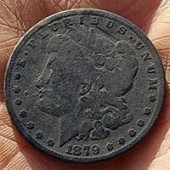
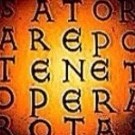
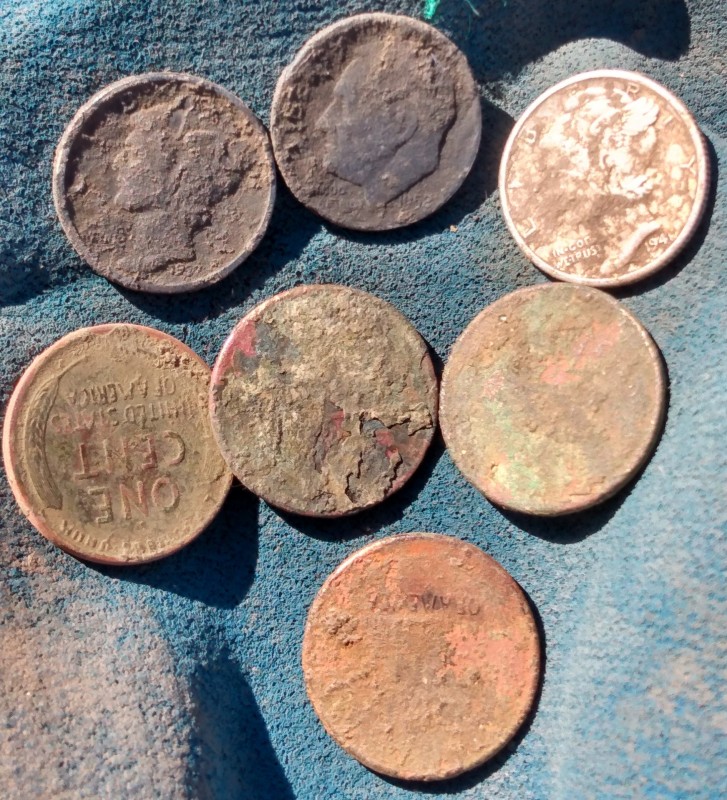
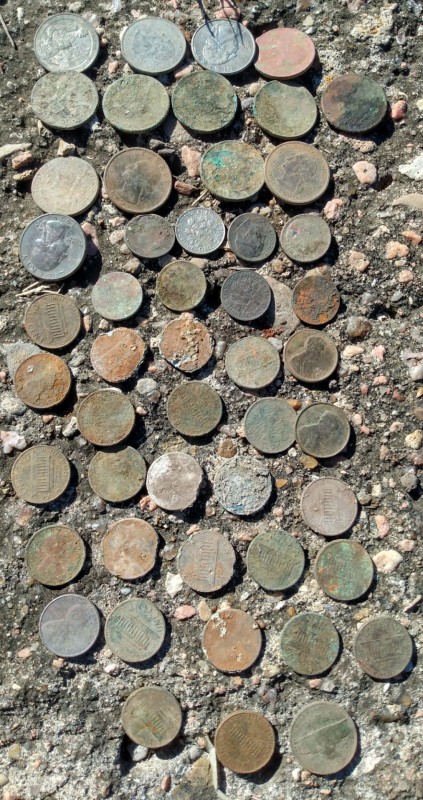
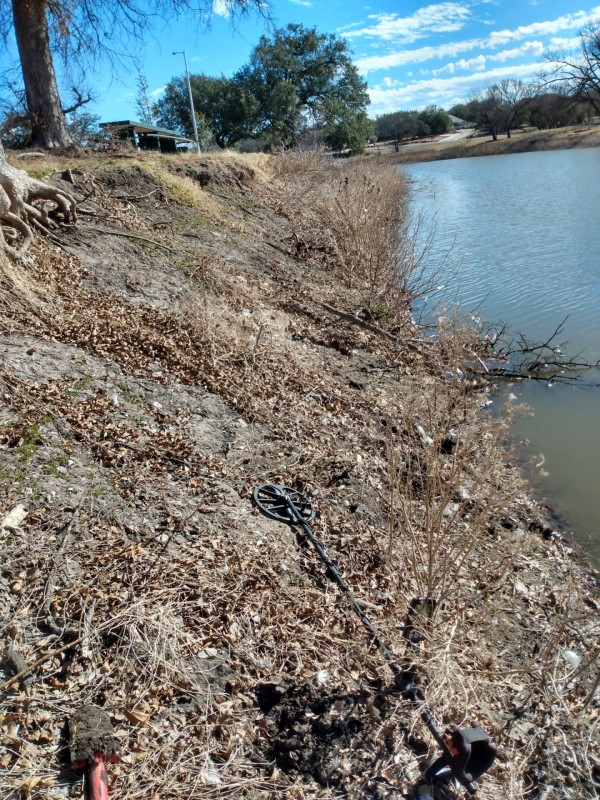
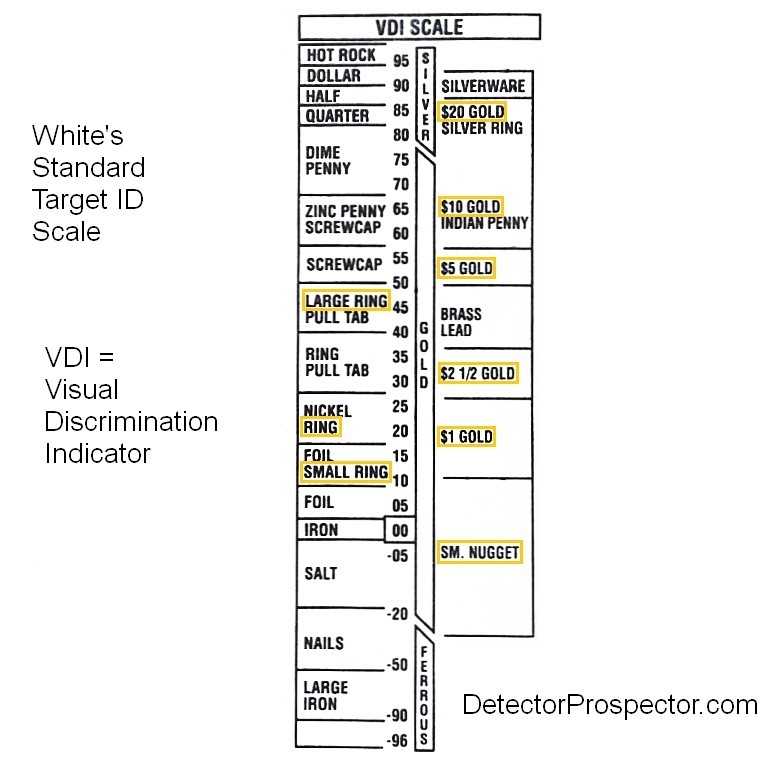

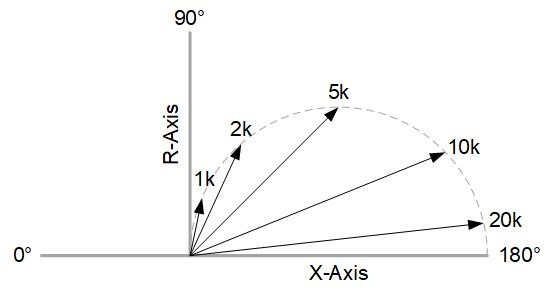

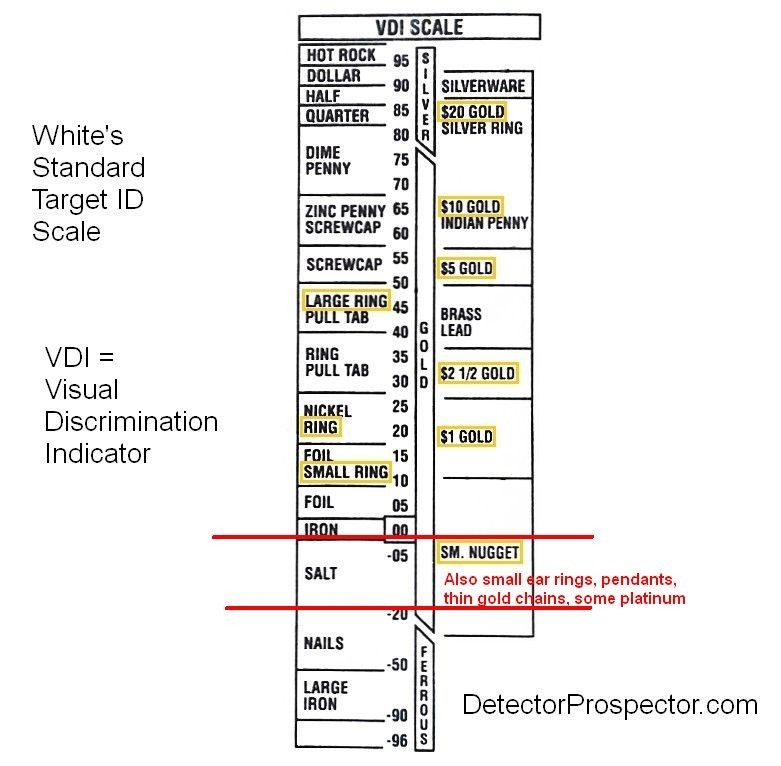
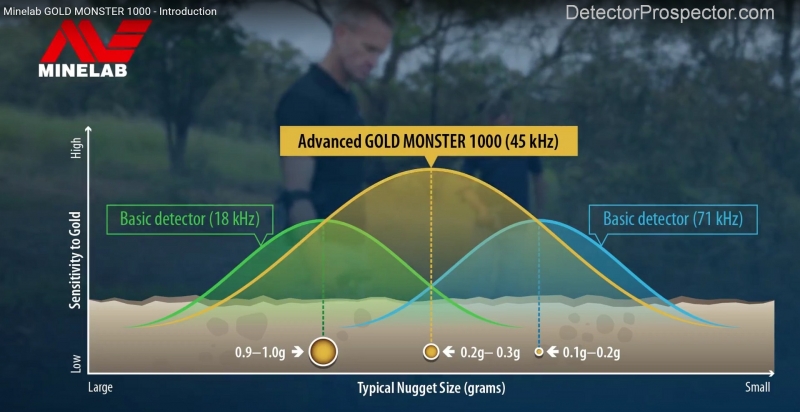

.thumb.jpg.77e4cb5bf39d44bdd2050d2edb7dfdb1.jpg)

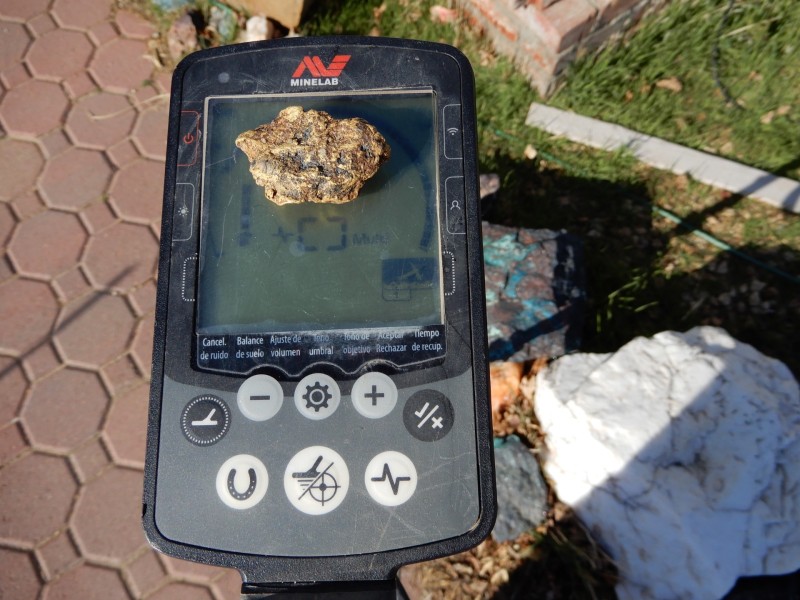
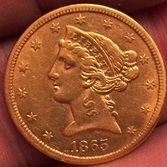






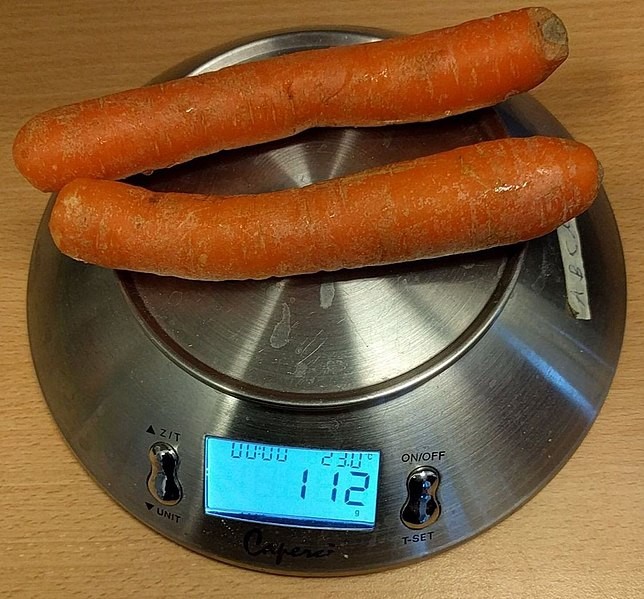
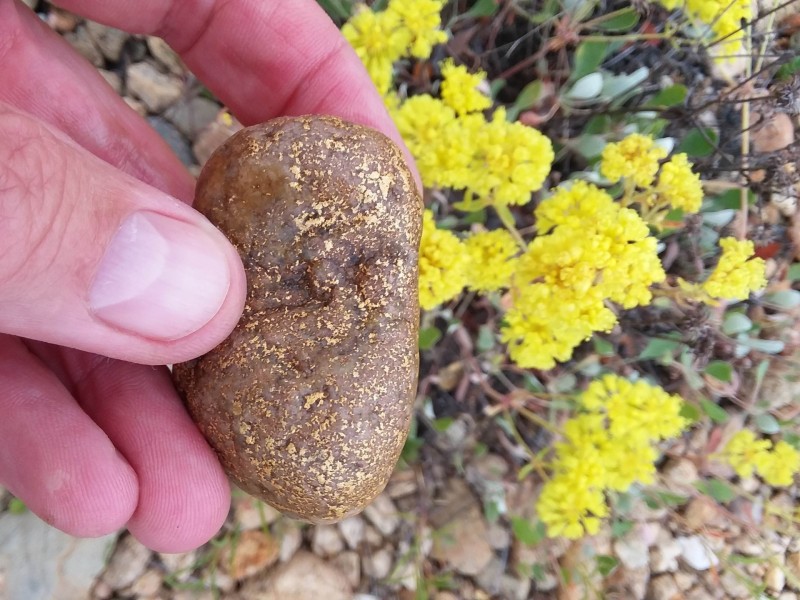
.thumb.jpg.d71314a45f3dc82bf75ac1b96e7e9201.jpg)
